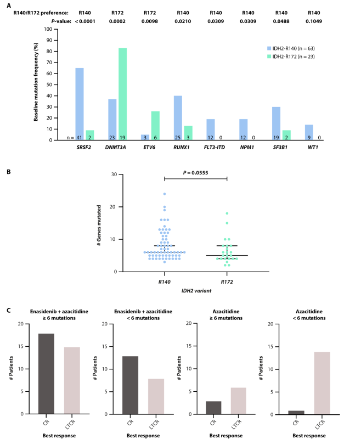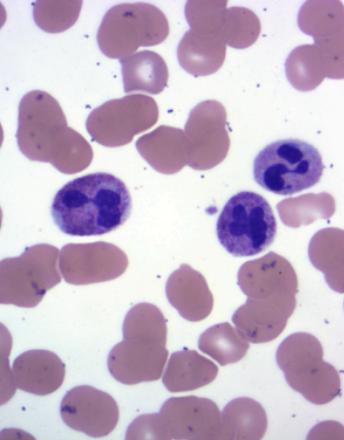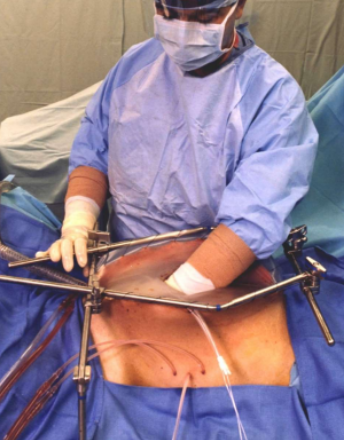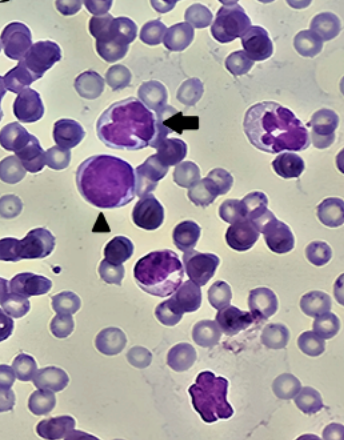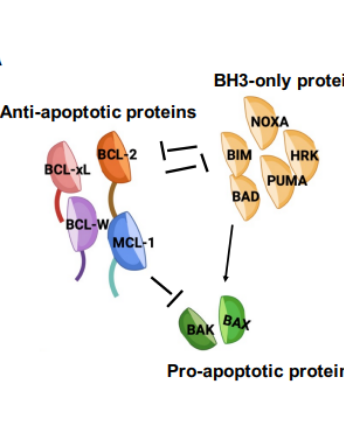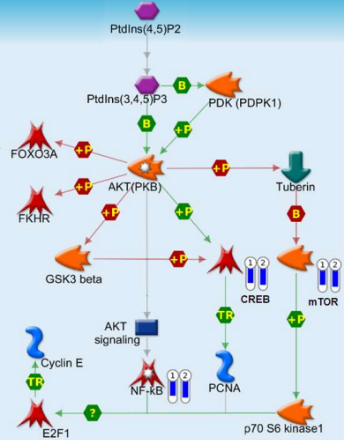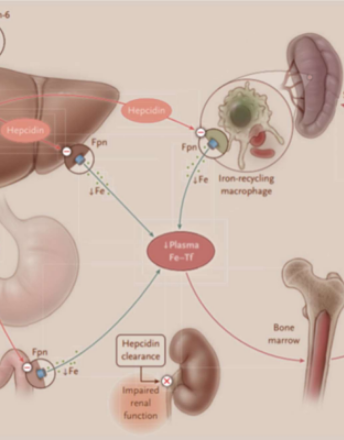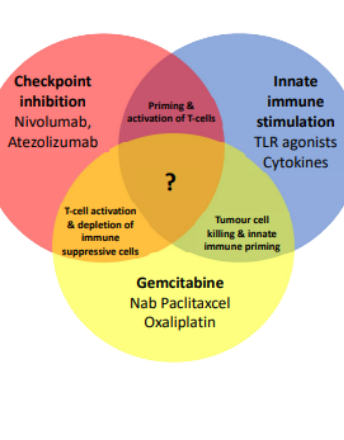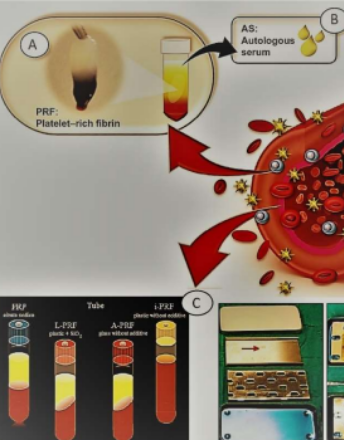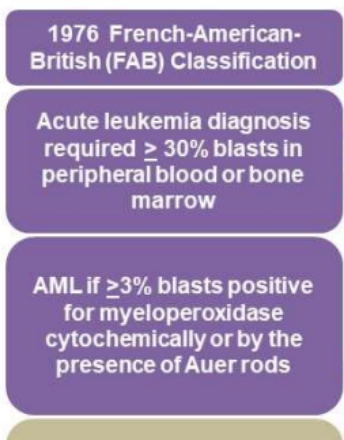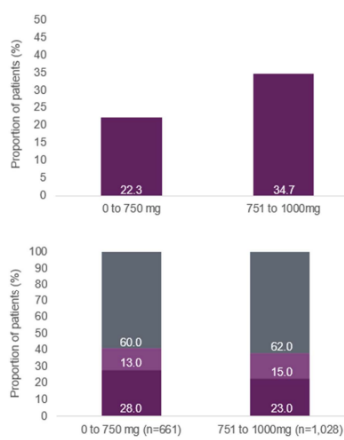Loading
Archive
Recommended Articles
Targeting Amino Acids to Treat AML
Acute myeloid leukemia (AML), a life-threatening disease, is a malignant disorder of the bone marrow characterized by the clonal expansion and differentiation arrest of myeloid progenitor cells. It is a highly heterogeneous disease and shows differential prognosis ranging from death within a few days of beginning treatment to complete remission. Systems biology approaches such as genomics and proteomics have already greatly facilitated the leukemia typing and prognosis stratification, which boosted the personalized medicine. However, the actual clinical outcome of patients is not always inconsistent with the current AML-stratification system. Moreover, AML subtypes especially relapse or refractory AML.
New N-ribosides and N-mannosides of Rhodamine Derivatives for Suppressing Leukemia Cell Line Growth
Leukemia is a tumor of the primary blood-forming cells. leukemia is not only a cancer of the white blood cells but also it originates in other blood cell types. Types of leukemia are categorized based on the rate of growth to acute (fastgrowing) or chronic (slower growing), and whether it arises in myeloid cells or lymphoid cells. Different types of leukemia have a different line of treatment and prognosis.
Lack of Prognostic Significance of Pretreatment Total Metabolic Tumor Volume on Event-free Survival at 24 Months in Diffuse Large B-cell Lymphoma
Diffuse large B-cell lymphoma (DLBCL) is a heterogeneous disease with variable outcomes. The majority of patients benefit from chemo-immunotherapy; however, 30 to 40% relapse after first-line treatment, and 10% are refractory to first-line treatment. This variability in outcome has led to the identification of prognostic factors to stratify patients based on their risk of relapse. The five-factor international prognostic index (IPI) was formulated for such risk stratification more than 20 years ago, based on clinical information obtained from patients with aggressive lymphomas treated with cyclophosphamide, doxorubicin, vincristine, and prednisone (CHOP)-like chemotherapy. The addition of rituximab to CHOP chemotherapy led to improved outcomes, diminishing the discriminatory capacity of IPI amongst risk groups. Efforts to enhance the prognostic model by adding or defining new factors have only led to minor improvements without the ability to identify patients at risk of an inferior outcome.
Effectiveness of Parenteral Iron Therapy in the Real-world Setting: A Retrospective Analysis
Iron deficiency anemia (IDA) is caused by an insufficient iron supply for erythropoiesis that leads to a reduction in hemoglobin (Hgb) and circulating red blood cells. Iron deficiency is the most common cause of anemia in the United States (US) and occurs most often from blood loss and in patients with chronic diseases and inflammation. It was estimated that approximately 10 million people are iron deficient in the US, including 5 million who have IDA.
The Research Progress of Circular RNA in Multiple Myeloma
The circular RNA (circRNA) is a covalently closed noncoding RNA, recently with the widespread application of high-throughput RNA sequencing bioinformatics methods, a large number of circRNAs found in human cells have been gradually discovered. It performs multiple biological functions in the human body and participates in the occurrence and development of different diseases such as tumors. Studies have found that circRNA is not easily degraded by exonuclease RNase R, has a half-life of more than 48 hours, can stably exist in eukaryotic cells, and its structure is highly conservative and organized, timing, disease-specific, and is expected to become a potential tumor diagnostic marker and therapeutic target.
Toward Integrated Genomic Diagnosis in Routine Diagnostic Pathology by the World Health Organization Classification of Acute Myeloid Leukemia
Significant milestones and seminal discoveries during 1674-1966, by individuals who have made crucial contributions toward progress in the diagnosis of hematologic neoplasms as we understand today are depicted chronologically. It is notable that the path to progress in the understanding of disease and neoplasms initially took centuries for significant discoveries (17th-18th centuries), and subsequently, many decades (19th-20th centuries) for a breakthrough or a change from the prevailing norm.
Management of Diagnostic and Treatment Centers in the Second Wave of COVID-19
COVID-19 has challenged global health and affected many countries. The disease had infected more than 16 million people and killed over 650,000 ones by the end of July 2020. According to Sahu et al., COVID-19 epidemic is the third most common coronavirus in the 21st century, resulting in numerous deaths all over the world. It has caused severe psychological stress and increased hospital visits along with increased tiredness and burnout of medical staff. The disease has also raised many problems for the management of hospitals and diagnostic-treatment centers, so that many of them have no capacity to receive patients.
What Do You Know So Far about the D-dimer Levels in COVID-19?
The Severe Acute Respiratory Syndrome, Coronavirus 2 (SARS-Cov-2), was first linked to cases of pneumonia of unknown cause in which they began to be reported in Wuhan, China. This represents a major threat to global health, and by the end of June, about 503 thousand deaths worldwide were found due to this disease. Coronaviruses are known for their great potential to cause systemic diseases, including changes in coagulation. Although it is still uncertain, studies point to the existence of a relationship between the severity of the case and the laboratory alterations that include the elevations in the levels of D-dimer and Von Willebrand Factor (vWF).
Mantle Cell Lymphoma and Hematopoietic Cell Transplantation in the Era of Cellular Therapy
Mantle cell lymphoma (MCL) is a rare subtype of non- Hodgkin Lymphoma (NHL) characterized by cyclin D1 translocations. Outcomes are heterogenous, but the disease is generally incurable. High-risk patients been shown to have a median overall survival (OS) of only 37 months and 20% five-year OS. In some patients, the disease is more indolent; such cases are associated with leukemic phase of the disease, SOX11-negativity, and mutated IGHV. Additionally, even across SOX11 positive cases outcomes vary, with worse overall survival in MCL with cytoplasmic staining as compared to nuclear staining. For patients with indolent clinical behavior, observation is frequently employed, and large case series suggest the possibility of prolonged periods before treatment becomes necessary, as long as 128 months, and favorable outcomes even once treatment has been initiated.
Needed, Assays for “Fetal Hemoglobin levels” in RBCs: Fetomaternal Hemorrhage and Expanded Applications in Sickle Cell Disease Management Could Forge an Evolution in Cellular Diagnostics
Treatment of sickle cell disease (SCD) remains varied with only a minority of patients benefiting from stem cell transplant as a near cure. Others await the promise of more effective and less toxic treatments than hydroxyurea, especially children who are most susceptible to the morbidities and mortalities of SCD. The recent report of Hebert, Rakotoson et al. points to an evolution of in vitro diagnostics (IVD) testing of blood cells with the emerging need for cell-by-cell measurement of red blood cell (RBC) specific hemoglobin variant levels. The study further provides clinical validation as to the utility of measuring HbF content in RBCs of SCD patients, not just as a prognostic test, but likely serving as a companion diagnostic in phase 3 clinical trials of new SCD therapies.
Anticancer Activity of S-Glycosylated Quinazoline Derivatives
Breast cancer is the most frequent malignancy in females. Due to its major impact on the population, this disease represents a critical public health problem that requires further research at the molecular level to define its prognosis and specific treatment. Basic research is required to accomplish this task and this involves cell lines as they can be widely used in many aspects of laboratory research and, particularly, as in vitro models in cancer research. MCF-7 is a commonly used breast cancer cell line, that has been promoted for more than 40 years by multiple research groups but its characteristics have never been gathered in a consistent review article.
When Should Transplant Physicians Think about Familial Blood Cancers?
A 56-year-old Caucasian man was referred to an academic medical center for consideration of allogeneic hematopoietic stem cell transplantation (HSCT). One year earlier, he had seen his primary care physician for increased fatigue and decreased exercise tolerance, and a complete blood cell count showed a total white blood cell count of 2500/μL, hemoglobin of 7.2g/dL, and a platelet count of 110,000/μL. The white blood cell differential showed an absolute neutrophil count of 900/μL. The patient was referred to a hematologist who performed a bone marrow biopsy that showed a myelodysplastic syndrome with del(5q).
Nanoscale Chitosan-Based Hemostasis Membrane
Excessive bleeding or hemorrhage in traumatic injuries is the leading preventable cause of death in the combat and civilian trauma centers. Nearly 50% of military deaths, 90% of military battlefield casualties, and 33-56% mortalities in civilian’s surgical bleeding are associated with severe bleeding and can be prevented. Hence, significant and rapid hemostasis or bleeding control require innovative strategies with easy to use, stable, and inexpensive processing. Furthermore, the developed hemostatic material should ensure biocompatibility and biodegradability with non-immunogenic properties. To date, a wide variety of hemostatic powders, dressings, and bandages have been investigated as useful materials in reducing hemorrhage.
Second Generation Platelet Concentrates - L-PRF (Fibrin Rich in Platelets and Leukocytes) and Its Derivatives (A-PRF, I-PRF)-: Morphological Characteristics to be Used in Modern Regenerative Surgery. Experimental Research
Platelet preparations (PDPs) have gained success, mainly due to their high concentrations of biologically active molecules, such as growth factors and cytokines, which play an important role in tissue repair and reconstruction. Recent knowledge shows that platelets can play a new role in tissue reproduction and vascular restoration, as well as being the protagonists of inflammatory processes and immune system responses. They release bio-active proteins and other active ingredients that can affect a number of phenomena that promote cell consumption, growth and transformation (growth factors).
Citius, Altius, Fortius: Performance in a Bottle for CAR T-Cells
The renewed interest in understanding how activated T cells alter their metabolism to support their growth and differentiation has led to several innovative advances in synthetic biology; culminating in a number of genetic and pharmacologic approaches aimed at improving the antitumor function of adoptively transferred T cells. Indeed, the growing field of immunometabolism has accelerated rapidly giving rise to exciting discoveries and exploratory studies revealing how T cells balance metabolic adaptations in response to intrinsic and extrinsic regulatory cues. Central to this body of work, we showed how chimeric antigen receptors (CAR)-induced metabolic reprogramming is an important determinant of efficacy and clinical outcome in blood-based malignancies.
Gemcitabine in the Era of Cancer Immunotherapy
Gemcitabine is a synthetic pyrimidine nucleoside analogue which is administered intravenously as a chemotherapeutic to treat numerous cancers. Gemcitabine requires transport into cells and activation by phosphorylation, the resulting gemcitabine triphosphate is incorporated into newly synthesized DNA during cell division, inhibiting further DNA synthesis and causing cell death. Gemcitabine is used to treat cancers including those of the pancreas, lung, breast, colon, and ovary either as first or second line treatments as a single agent or in combination.
Targeted Immune Therapy as Example of Paul Ehrlich’s “Magic Bullets” Developed More than 100 Years Ago
In the article by Gerhard Zugmaier, Antibodies in hematology by the example of acute lymphoblastic leukemia, Der Internist 10 (2019) 1032–1035, the application of antibodies in hematology was described by using the example of acute lymphoblastic leukemia. Antibodies have become an essential element of treatment for patients with hematological tumors. This concept was developed more than 100 years ago in a different context. The German physician Paul Ehrlich (1854-1915) said, that for the defense against bacteria “antibodies” were be responsible. In the antibodies Ehrlich saw therapeutic compounds, that like “magic bullets” would find their target and only destroy this target without affecting the organism. Paul Ehrlich became inspired by a scene in the German opera “Der Freischütz” (“The marksman”) by the composer Carl Maria von Weber.
CART Cells: A New Dawn in Cancer Immunotherapy
Over the last 10 to 15 years the treatment of patients with hematologic malignancies has seen the blossom of a large number of new agents and even new treatment strategies. Monoclonal antibodies (MoAb), TKI inhibitors, checkpoint inhibitors have been introduced in the daily clinical practice and contributed significantly to the improvement of the outcome of hematologic patients. Along with the development of these new drugs, cellular therapies, namely chimeric antigen receptor-engineered T (CART) cells, have revolutionized the therapeutic paradigm of patients with B-cell lymphoid malignancies and acute lymphoblastic leukemia (ALL).
Unmasking the Master of Disguise: Defining Advancements in Diagnosis of Intravascular Large B-cell Lymphoma
Intravascular B cell lymphoma (IVBCL) is notoriously difficult to diagnose as the clinical manifestations are protean, and the patterns seen with routine labs and imaging are non-specific. Furthermore, the disease follows an aggressive course and is often fatal within a matter of weeks to months from symptom onset, unless recognized and treated appropriately. This has historically meant that diagnosis was made at autopsy for many patients. Over the past few decades, however, scientific and clinical literature have slowly accumulated to better characterize and raise clinical awareness of this disease. In this paper, we will review the characteristics that make this diagnosis challenging, and then discuss new and emerging diagnostic avenues.
Anticancer and Antiviral Activity of the Pyridine-Biphenyl Glycoside System
According to the report published recently by the World Health Organization, the number of cancer cases in the world will increase to 22 million by 2030. So, the anticancer drug research and development is taking place in the direction where the new entities are developed which are low in toxicity and are with improved activity. Pyridine and their pyridine-biphenyl system derivatives represent a very important class of heterocyclic compounds, which have a diverse therapeutic area. Recently, many active compounds synthesized are very effective; natural products isolated with pyridine moiety have also shown to be potent towards cancer.


